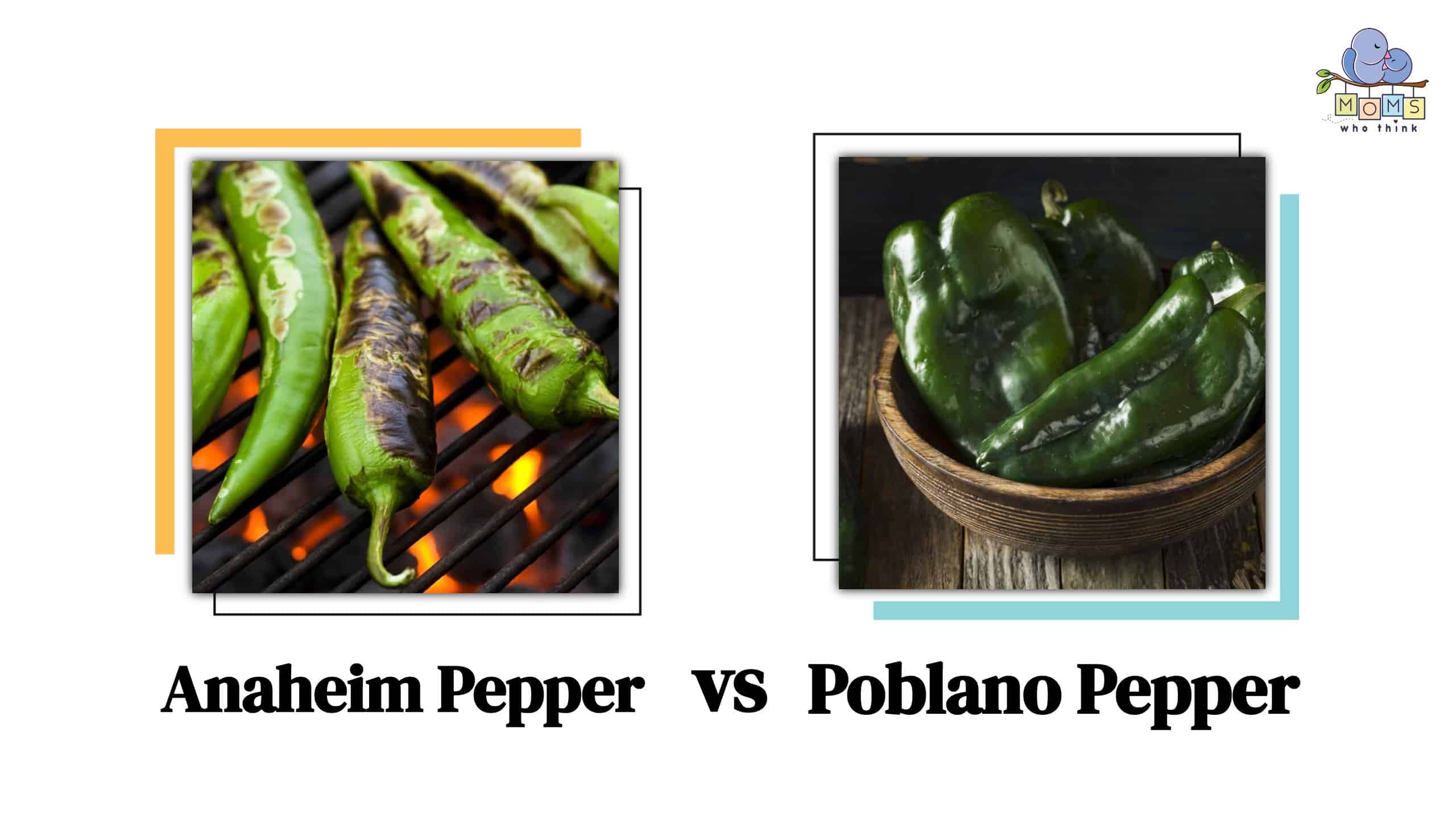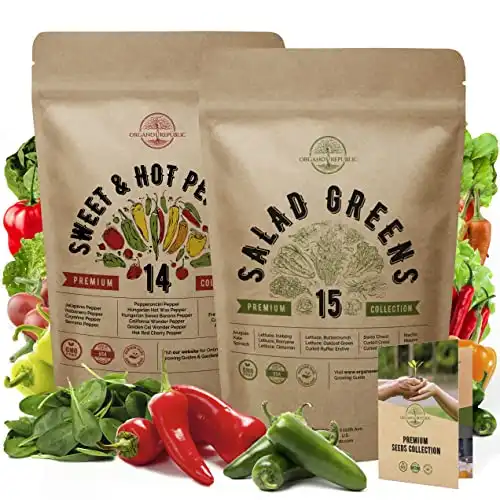When cooking anaheim peppers and poblano peppers are among the two most popular choices for many cooks. The key difference between the two is their heat intensity level. In this article, we will explore their origins, heat levels, nutritional values, and benefits of these peppers.
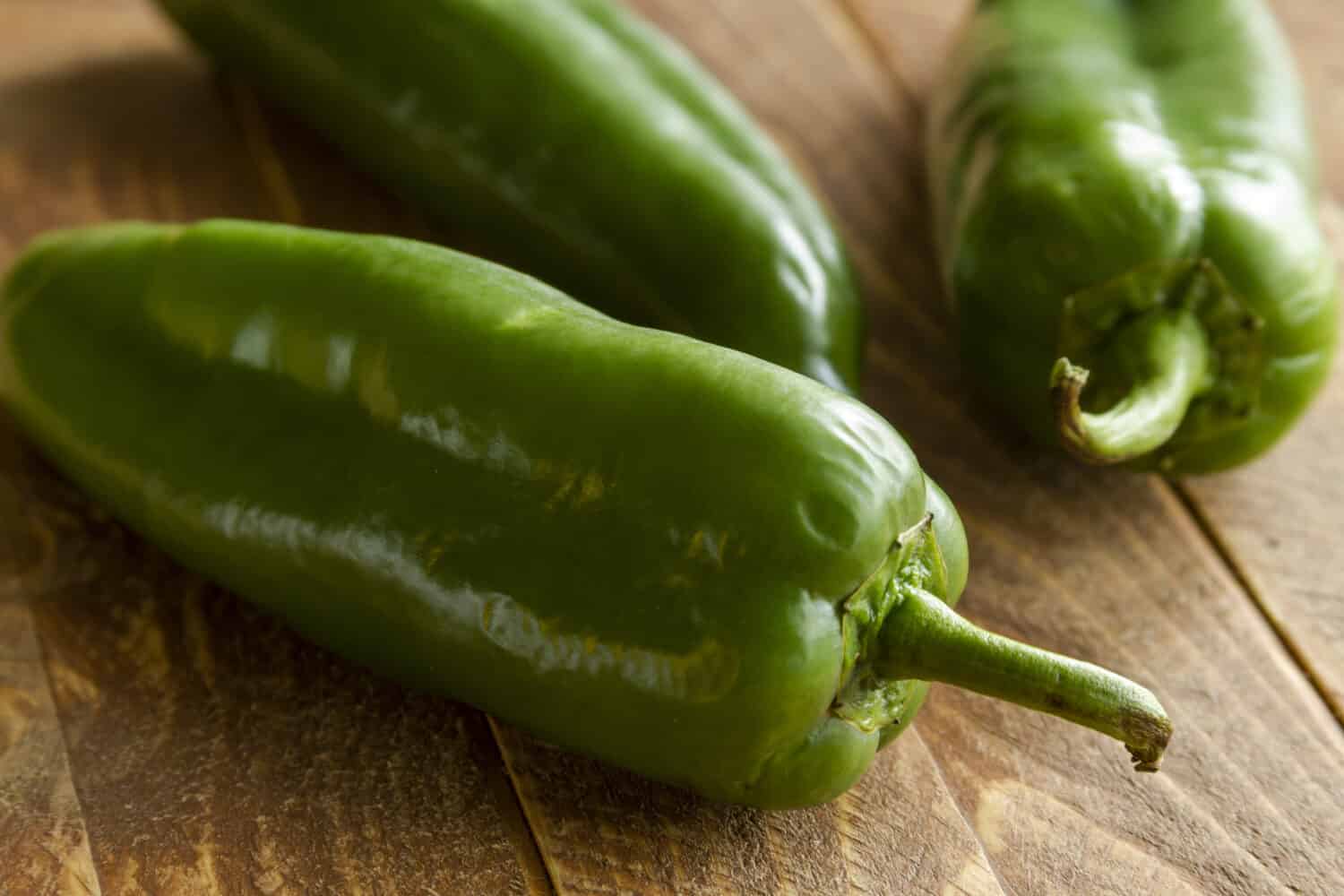
©Teri Virbickis/Shutterstock.com
What Are Anaheim Peppers?
Anaheim peppers originated in New Mexico and were named after the city in Southern California. Emilio Ortega, a farmer brought these peppers to the California region in the early 20th century.
Anaheim peppers are mild and have a slightly sweet peppery flavor. When it comes to heat, anaheim peppers are generally considered mild, ranging from 1000 to 2,500 Scoville heat units. This makes them a perfect choice for stews, salads, and other dishes.
They are usually harvested when green, but can also be harvested when yellow or red. These long, thin, bright peppers are 1 to 2 inches in diameter and vary in length from 6 to 10 inches.
These chilies can be grown at home by anyone with a green thumb. If you're thinking about growing peppers in containers, just keep in mind their size. It takes about 80 days for an Anaheim plant to mature and will usually be between 18 and 24 inches tall.
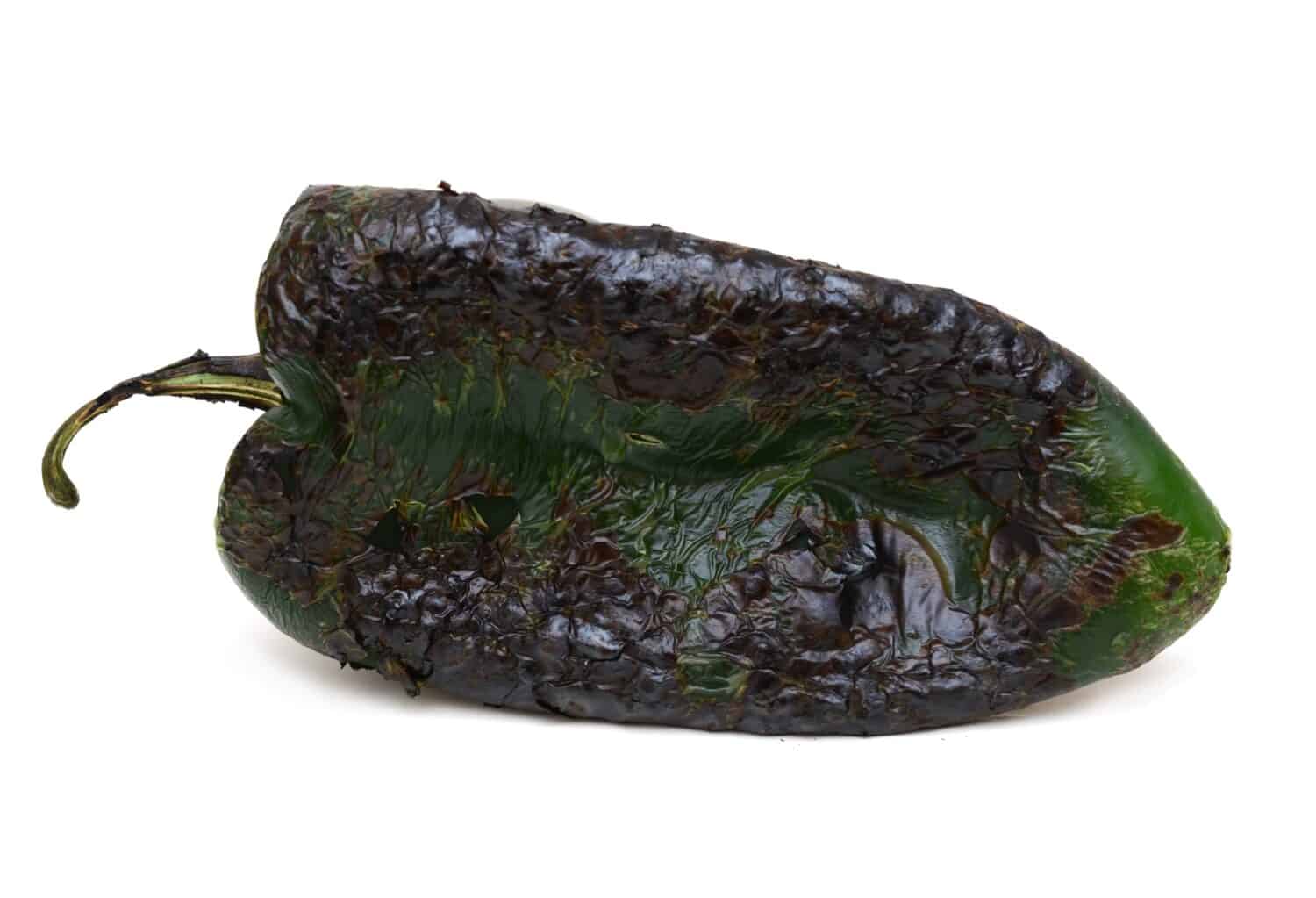
©Quang Ho/Shutterstock.com
What Are Poblano Peppers?
Poblano peppers are believed to have originated in Mexico in the state of Puebla. Today, they are grown in many regions throughout Mexico and in the United States.
Poblano peppers when green are usually described as having a mild earthly flavor similar to green peppers. They are on the milder end of the spectrum, with a SHU range of 1,000 to 2,000.
Poblano peppers are versatile and can be used in many dishes. They can be roasted, stuffed, or grilled and often adds flavor to your dish. Poblano peppers are commonly used in Mexican dishes such as chiles rellenos, enchiladas, and tacos.
These peppers are green and can be harvested between 65 and 80 days. A poblano plant growing in a container can reach about 24 inches and will typically produce 4 to 8 chilies per plant and up to 20 to 40 chilies every season. However, a poblano pepper plant that is allowed to reach its maximum size of 60 inches or more can yield up to 145 peppers in a season.
Nutritional Facts and Health Benefits of Anaheim Pepper vs. Poblano
Both anaheim and poblano peppers are low in calories and can assist in weight loss. They are high in fiber, vitamin C, and vitamin A. Both peppers contain a good source of vitamin K a protein that helps prevent blood clotting, heal wounds, and improve bone metabolism.
Peppers are rich in antioxidants, which help maintain the health of cellular structures. Additionally, they may reduce inflammation in the body and the risk of chronic diseases such as cancer and heart disease.

©fizkes/Shutterstock.com
Best Ways To Cook Anaheim and Poblano Peppers
Anaheim and poblano peppers are versatile and a fantastic way to add more flavor to your dish. Let’s look at some popular methods on how you can prepare them.
- Roasting and peeling – to do this, place the peppers on a baking sheet and cook under a hot grill until most of the skin is black for about 10-15 minutes. Once the peppers have cooled peel off the skin.
- Grilling – brush the peppers with olive oil, salt, and pepper on all sides and grill in the oven for 4-5 minutes.
- Stuffed peppers – are a popular dish in Mexican cuisine. To make them, simply cut the top of the pepper off, remove the seeds, and stuff them with a mixture of rice, cheese, and vegetables or add some ground beef. Bake them covered with foil for 35 minutes so that they can steam and become slightly tender. Remove the foil and bake for a further 10 minutes so that the cheese can brown and bubble.
- Sautéed peppers – slice them and sauté them in a pan with some olive oil and garlic until they are tender and lightly browned.
10 Simple Anaheim and Poblano Dishes
- Chile Relleno – similar to stuffed peppers these peppers are filled with yummy Monterey Jack cheese dipped in batter and then deep-fried until golden and crispy.
- Tomatillo green chili salsa verde – is a simple, flavorful dish that can be stored in the refrigerator for up to 10 days. Using only a few simple ingredients such as garlic, tomatillos, onion, cilantro, anaheim, sugar, salt, and lime juice.
- Caldo de Queso (Mexican Cheese and Potato Soup) – This soup is made with potatoes, cheese, and anaheim all of which are simmered in a delicious, light tomato and onion broth that is flavored with garlic, oregano, and cilantro. A little milk is also added to the broth to give it a unique flavor and added creaminess.
- Mango corn salsa – savory and sweet taking only 5 minutes to prepare this dish consists of frozen corn, diced green chilies, anaheim, kosher salt, mango, lime, and onion.
- Santa Maria beans – made with pinquito beans, ham, bacon, roasted anaheim peppers, parsley, tomatoes, onion, garlic, Worcestershire sauce, and mustard. A perfect side dish for a barbeque.
- Poblano pepper soup – perfect for cold cooler nights made with roasted poblano peppers and heavy cream.
- Poblano pepper and corn salad – is a fresh and bright side dish made with roasted poblano, corn, cherry tomatoes, and a light vinegarette dressing.
- Chicken tortilla soup – a healthy spicy soup loaded with chicken, roasted poblano, green chilies, and chili powder.
- Poblano casserole – quick, easy, and meatless this dish is created by creating layers of poblano peppers, cheese, and an egg batter consisting of, milk, cornmeal, baking powder, eggs, and salt then baked for 15-20 minutes at 450 F.
- Bacon-wrapped stuffed poblanos – stuffed with sharp cheddar cheese, cream cheese, onion, and garlic then wrapped in bacon and baked for 20 minutes.
Conclusion
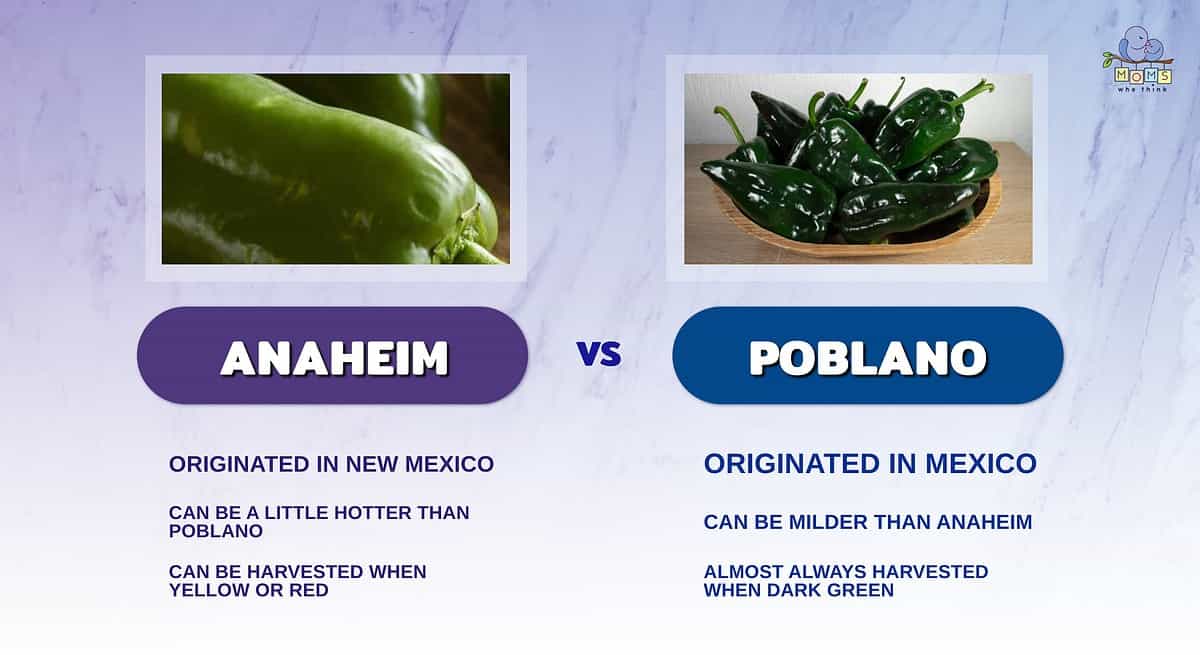
- Anaheim peppers originally come from New Mexico, while poblano peppers come from Mexico.
- Both of these peppers have very similar heat levels, but Anaheim peppers can be spicier than poblano. These peppers should be fine for those sensitive to spicy food.
- Anaheim peppers are usually harvested when green, but can be harvested when yellow or red as well. Poblanos are almost exclusively harvested when dark green.
Whether you are looking to create a spicy meal, soup, or sauce both anaheim and poblano are two versatile delicious ingredients used in many dishes. They have a mild to medium heat level with a sweet to smokey flavor. Be sure to pick some up the next time you go to the supermarket, your tastebuds will thank you.
Frequently Asked Questions
Can I substitute anaheim and poblano peppers with other peppers?
Yes, whether you want a mild flavor you could opt for a bell pepper if you are in the mood for something hotter you can substitute and use jalapeños it all depends on your personal preference.
Are there any health risks with eating anaheim and poblano peppers?
Both peppers are considered safe to eat although some people may have an allergic reaction for example difficulty breathing, swelling, or skin rash. If you experience any of these reactions seek medical care immediately.
Can I freeze anaheim and poblano peppers?
Yes you can, the best way to freeze peppers is to:
- First, rinse and dry them.
- Next, remove the stems and take out the seeds.
- After that, slice them up lengthways or into smaller chunks, this makes them easier to add to dishes like stir-fries or pasta.
- Once sliced lay them out on a flat baking sheet and flash freeze for 1 hour. As a result, the pepper slices won't stick together during long-term freezing.
- Finally, place the pepper slices into freezer bags, once full remove as much air as possible, and can be stored in the freezer for up to 1 year.
Can I grow anaheim peppers at home?
Anaheim peppers are easy to grow and can produce peppers for up to 3 years.
- First, you’ll need to plant the seedlings in warm soil.
- Place them about 0.2 inches deep and a couple of feet apart in direct sunlight.
- Be sure to water the peppers frequently so that the soil is moist.
Recipes
Feeling hungry yet? Try one of these delicious dishes:
PrintPork and Poblano Pozole
- Yield: 8 servings 1x
Ingredients
2 tablespoons vegetable oil
1 onion, coarsely chopped
4 cloves garlic, minced
1 1/2 pounds boneless pork loin, cut into bite-size cubes
1 1/2 teaspoons ground cumin
1 teaspoon ground coriander
1 teaspoon dried oregano
1 teaspoon sweet paprika
Salt and pepper, to taste
4 poblano chiles, roasted, peeled, seeded, diced
1 jalapeno, seeded and minced
4 cups low-sodium vegetable broth
1 (28 ounce) can hominy, drained
Instructions
1. Heat oil in a large pot over medium heat. Add onion and cook, stirring often, for 4 to 5 minutes.
2. Add garlic and cook, stirring for 30 seconds.
3. Add pork, cumin, coriander, oregano, paprika, and salt and pepper and cook, stirring occasionally until pork is browned on all sides.
4. Stir in poblanos and jalapenos.
5. Add enough vegetable broth to cover ingredients with 2 inches of liquid. Stir and bring to a boil. Lower heat and simmer for 30 to 40 minutes.
Nutrition
- Serving Size: Per serving
- Calories: 504
- Sodium: 173mg
- Fat: 8g
- Carbohydrates: 82g
- Fiber: 6g
- Protein: 28g
- Cholesterol: 57mg
- Seeds including: Anaheim, Banana, Big Jim, California Wonder Bell, Cayenne, Cubanelle, Golden California Wonder Bell, Habanero, Hungarian Hot Wax, Jalapeno, Pepperoncini, Poblano, Red Cherry, and Serrano Peppers.
- Seeds including: Arugula, Kale, Spinach, Buttercrunch Lettuce, Oakleaf Green Lettuce, Cimarron Lettuce, Iceberg Lettuce, Romaine Lettuce, Swiss Chard, Corn Salad - Mache, Mizuna - Lime Streaks, Curled Cress, Endive Curled Ruffec, Radicchio, Curled Mustard.
